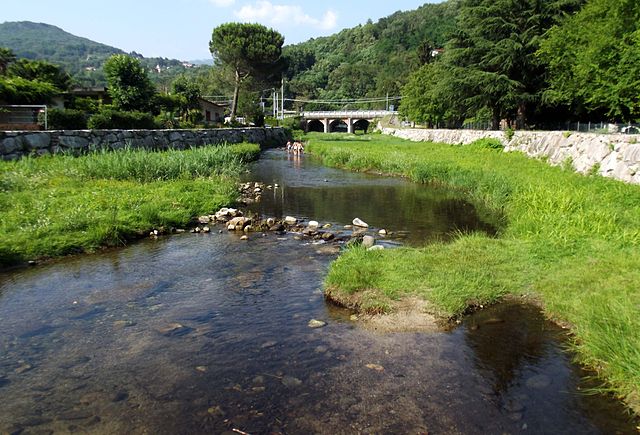In hydrology, discharge is the volumetric flow rate of a stream. It equals the product of average flow velocity and the cross-sectional area. It includes any suspended solids, dissolved chemicals like CaCO3(aq), or biologic material in addition to the water itself. Terms may vary between disciplines. For example, a fluvial hydrologist studying natural river systems may define discharge as streamflow, whereas an engineer operating a reservoir system may equate it with outflow, contrasted with inflow.
Torrente Pescone, one of the inflows of Lake Orta (Italy).
Visual description of Hydrologic Cycle
Hydrology is the scientific study of the movement, distribution, and management of water on Earth and other planets, including the water cycle, water resources, and drainage basin sustainability. A practitioner of hydrology is called a hydrologist. Hydrologists are scientists studying earth or environmental science, civil or environmental engineering, and physical geography. Using various analytical methods and scientific techniques, they collect and analyze data to help solve water related problems such as environmental preservation, natural disasters, and water management.
Rain over a Scottish catchment. Understanding the cycling of water into, through, and out of catchments is a key element of hydrology.
The Roman aqueduct at Caesarea Maritima, bringing water from the wetter Carmel mountains to the settlement.
A standard NOAA rain gauge
Estimates of changes in water storage around the Tigris and Euphrates Rivers, measured by NASA's GRACE satellites. The satellites measure tiny changes in gravitational acceleration, which can then be processed to reveal movement of water due to changes in its total mass.






